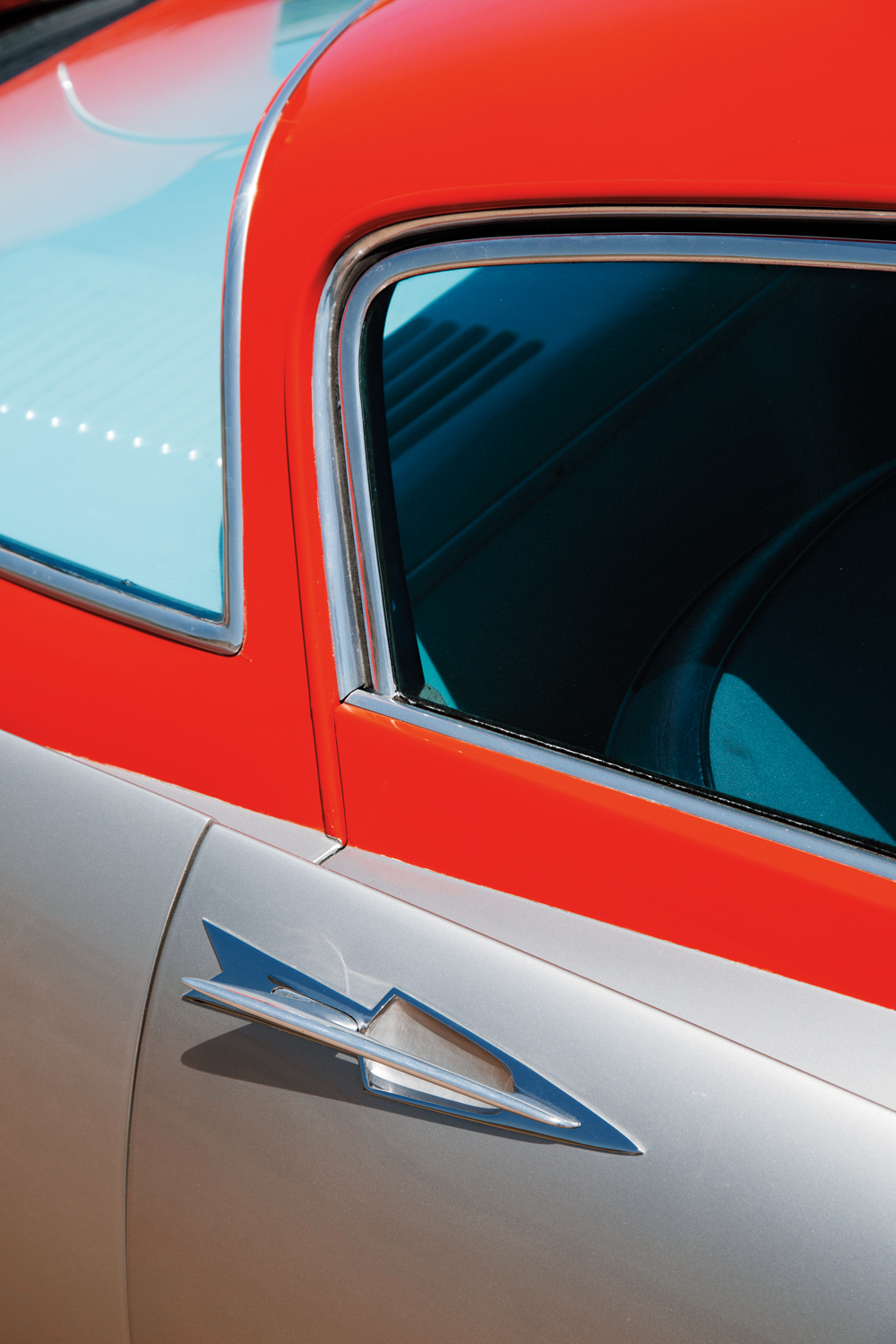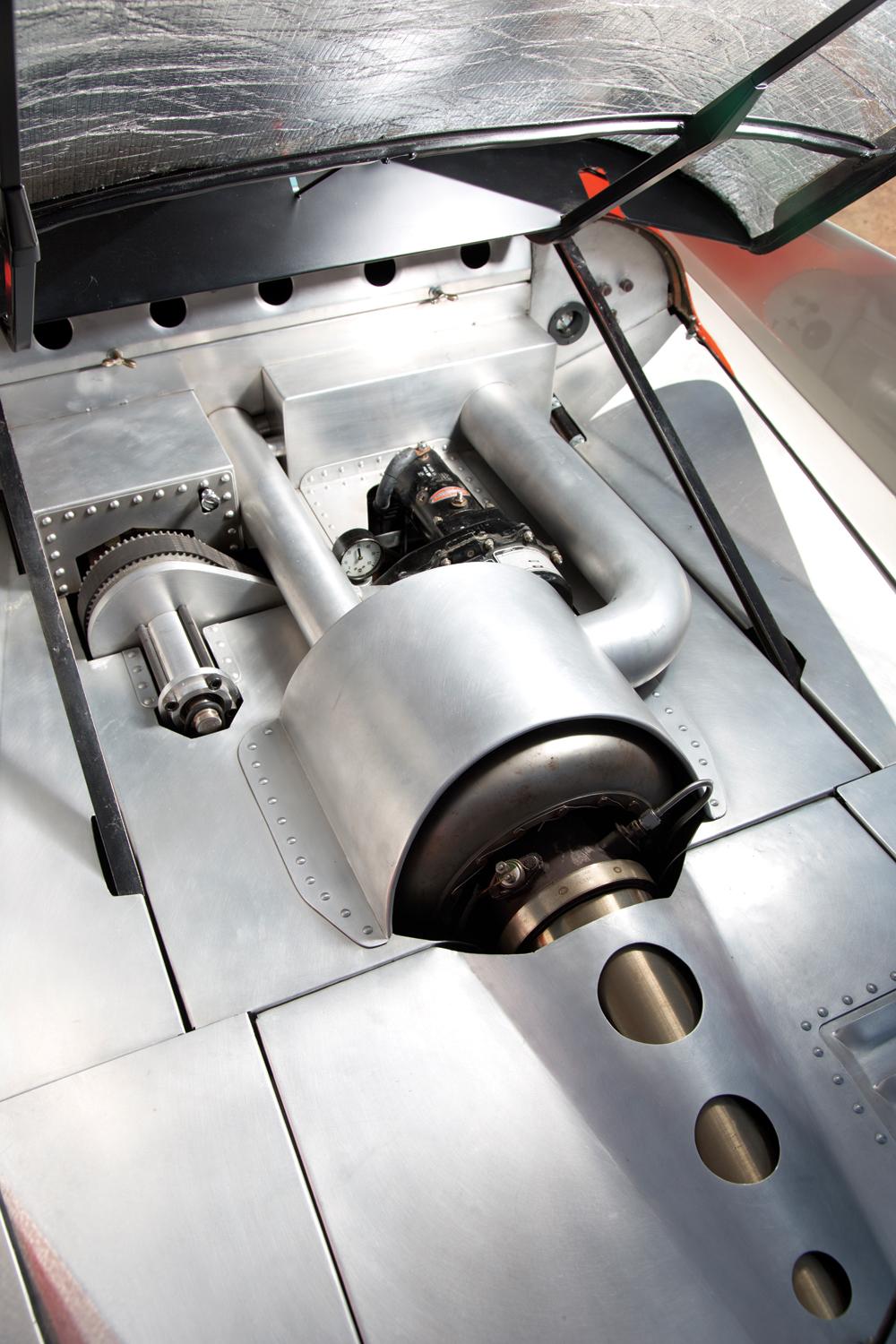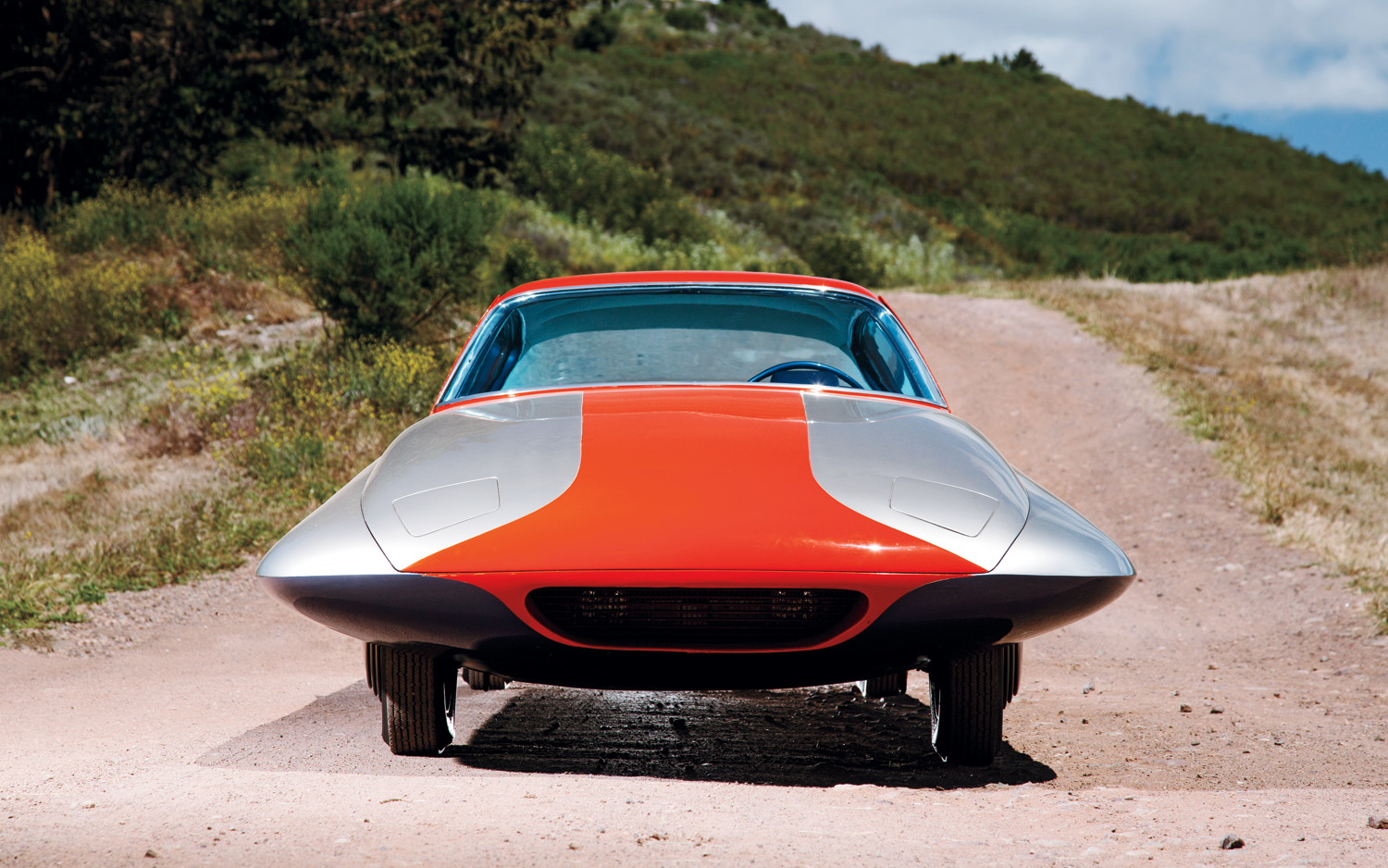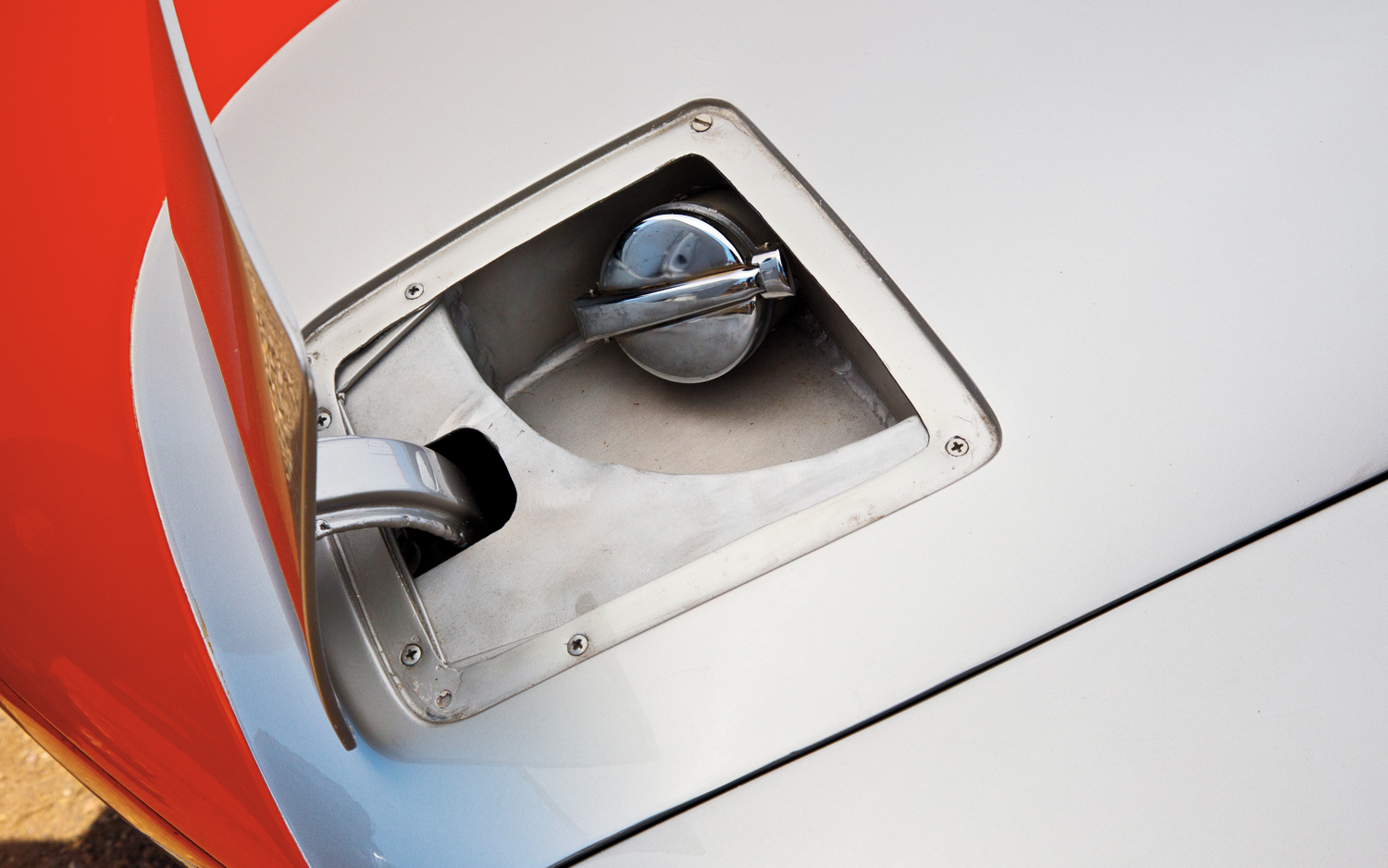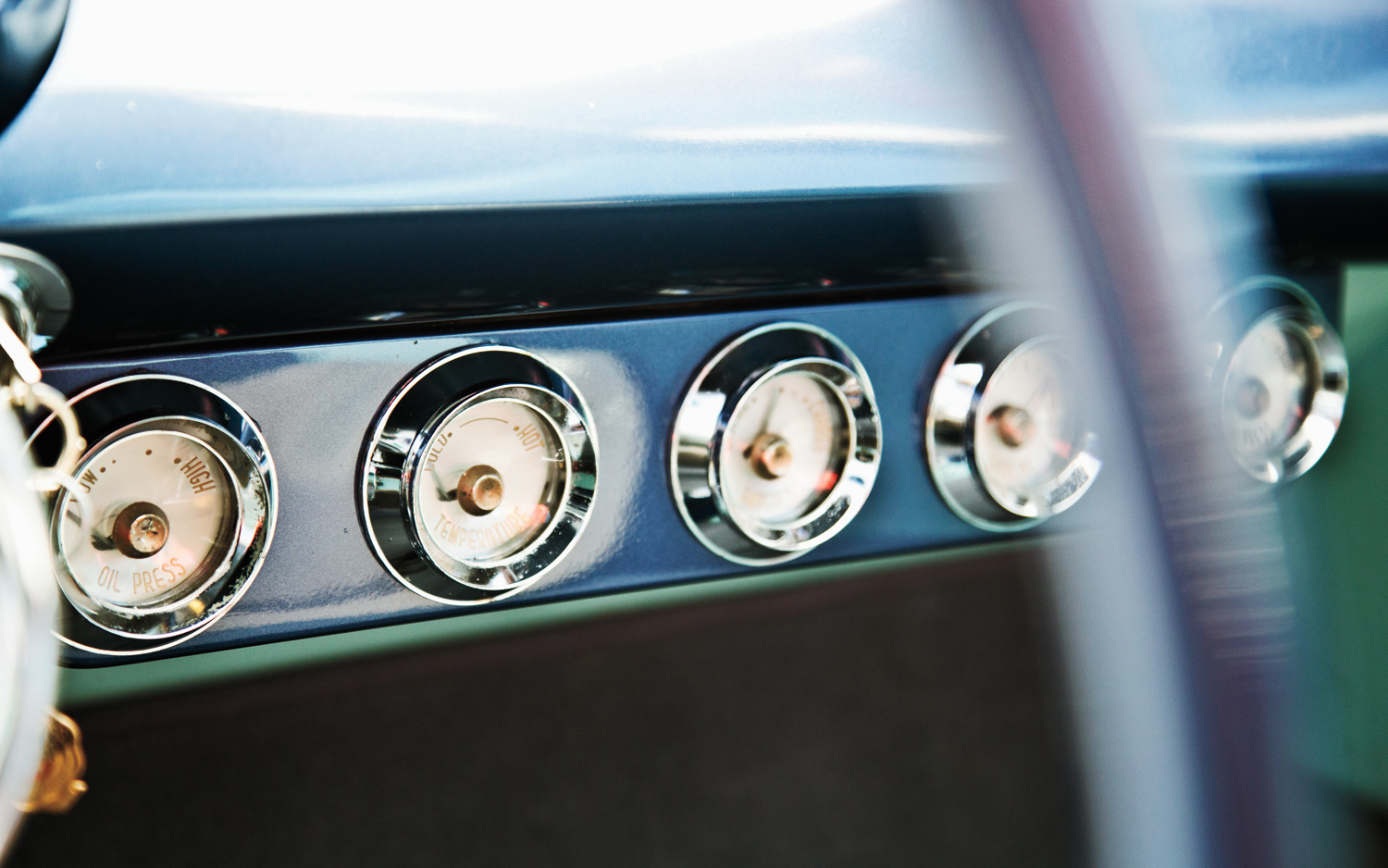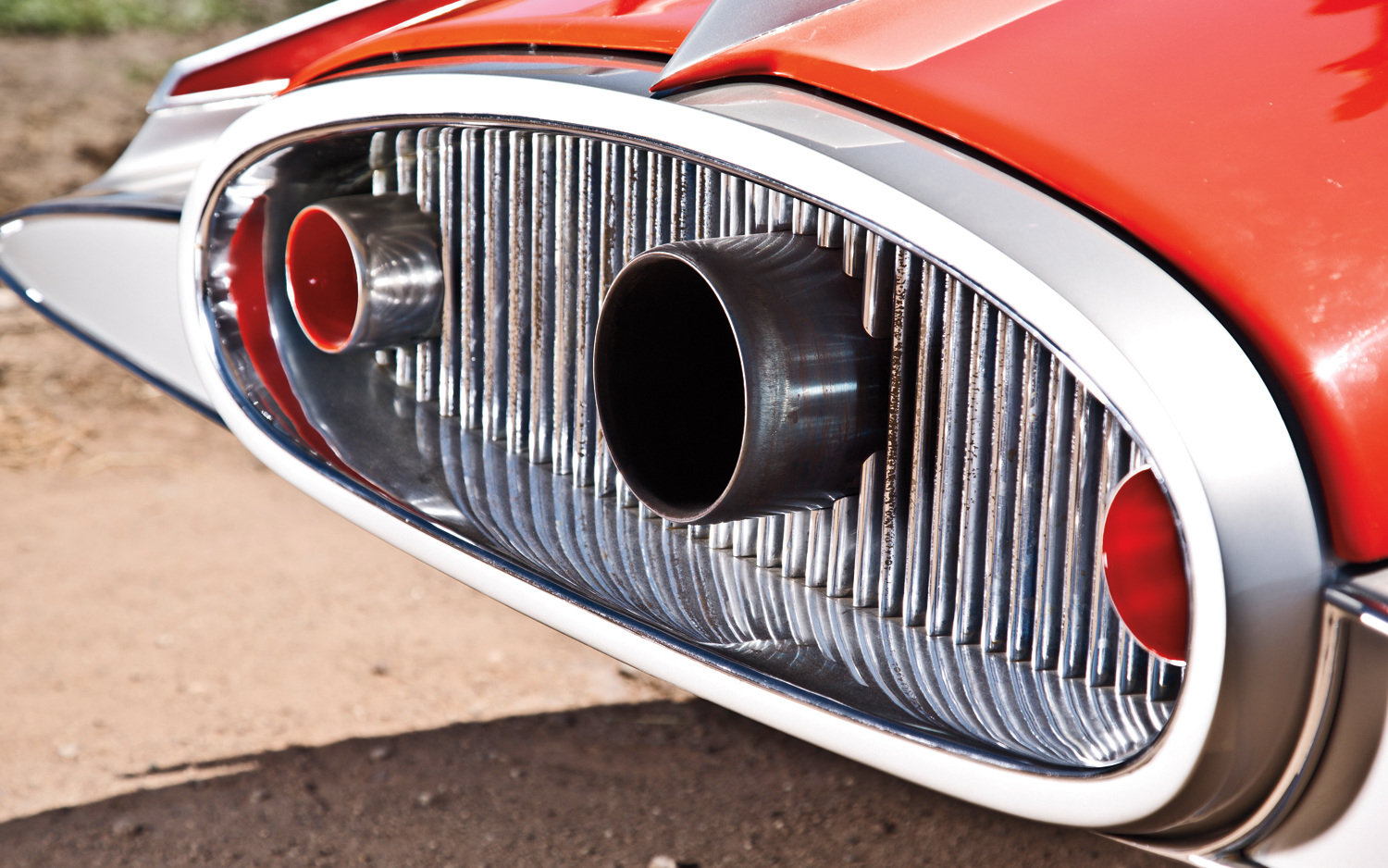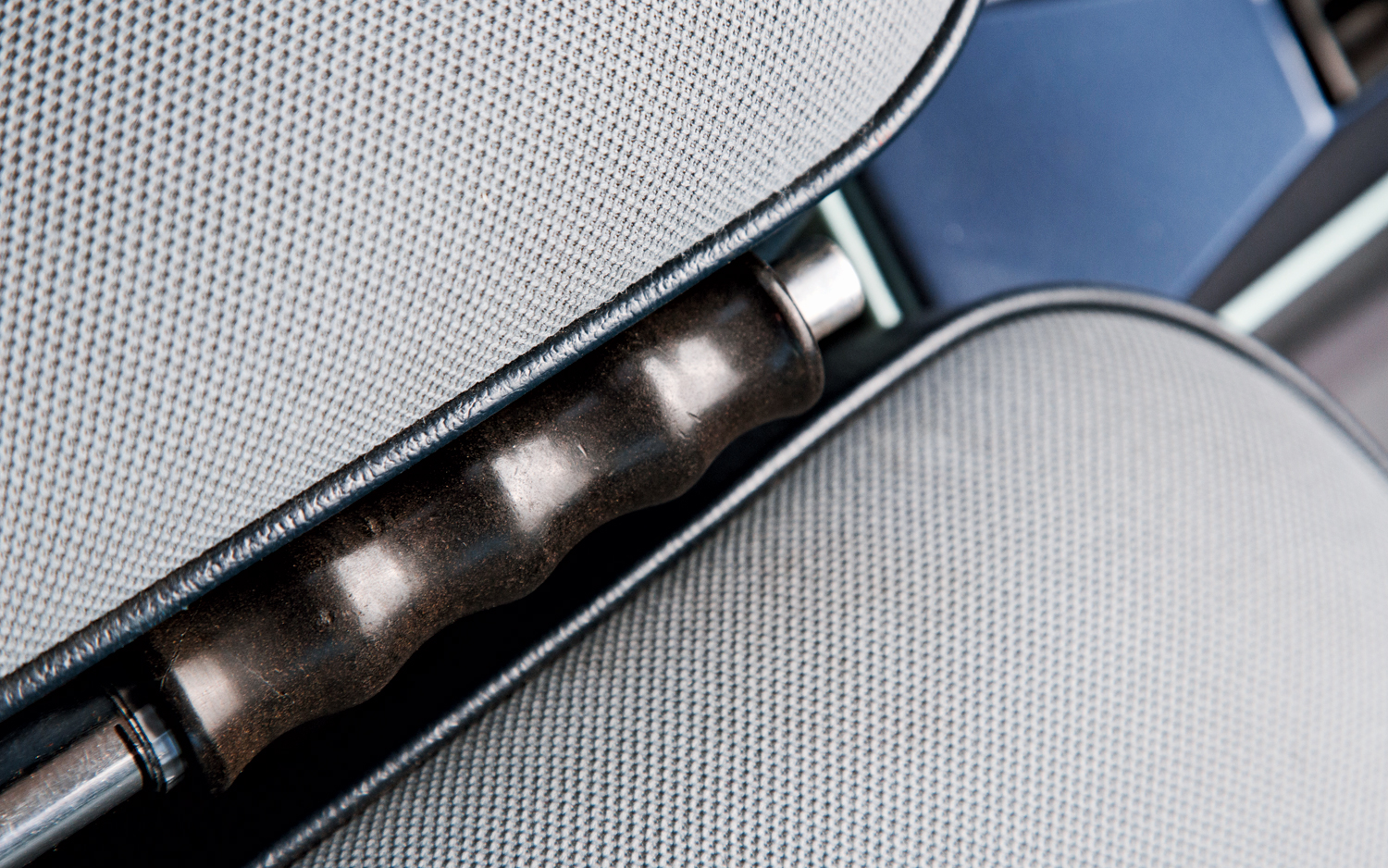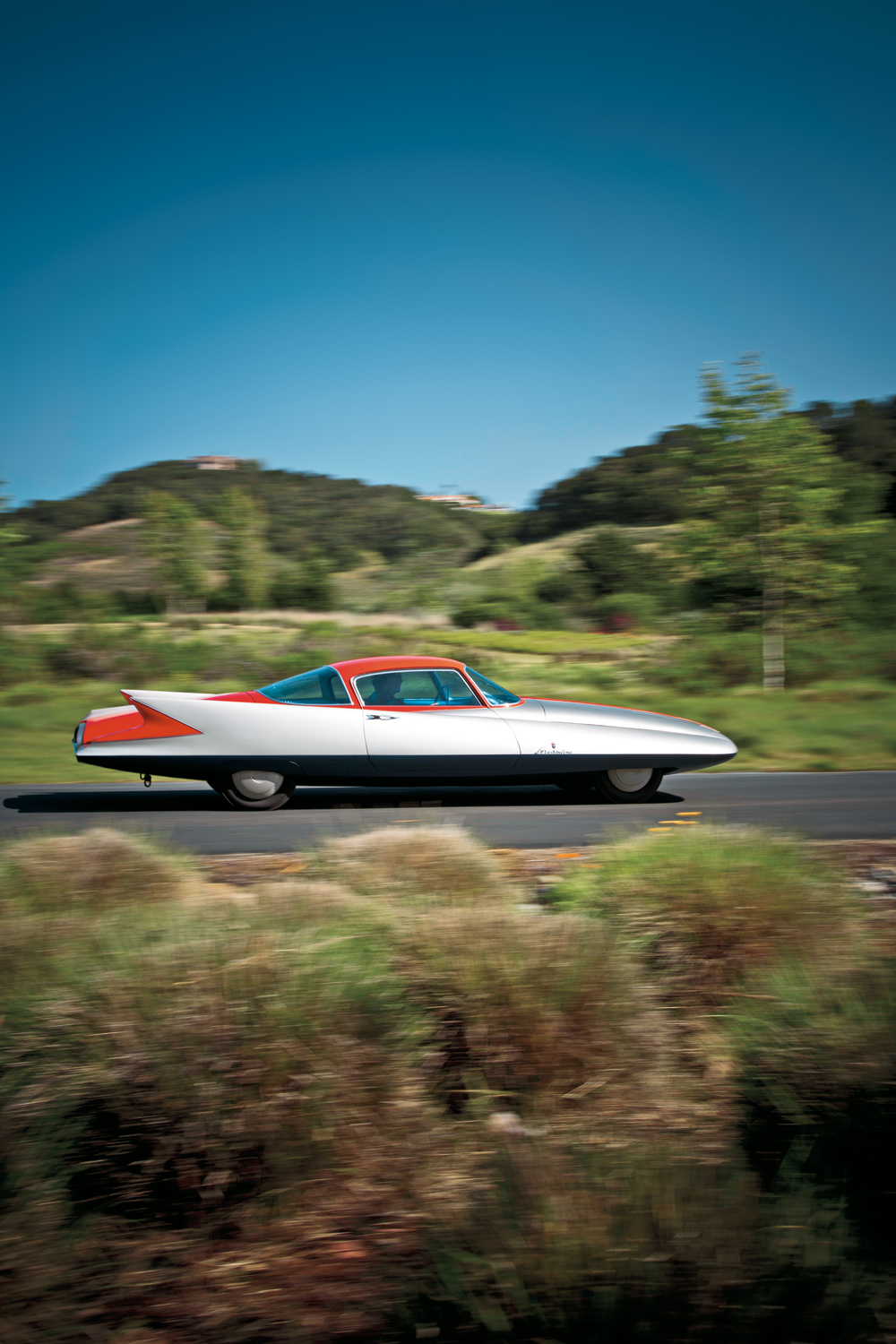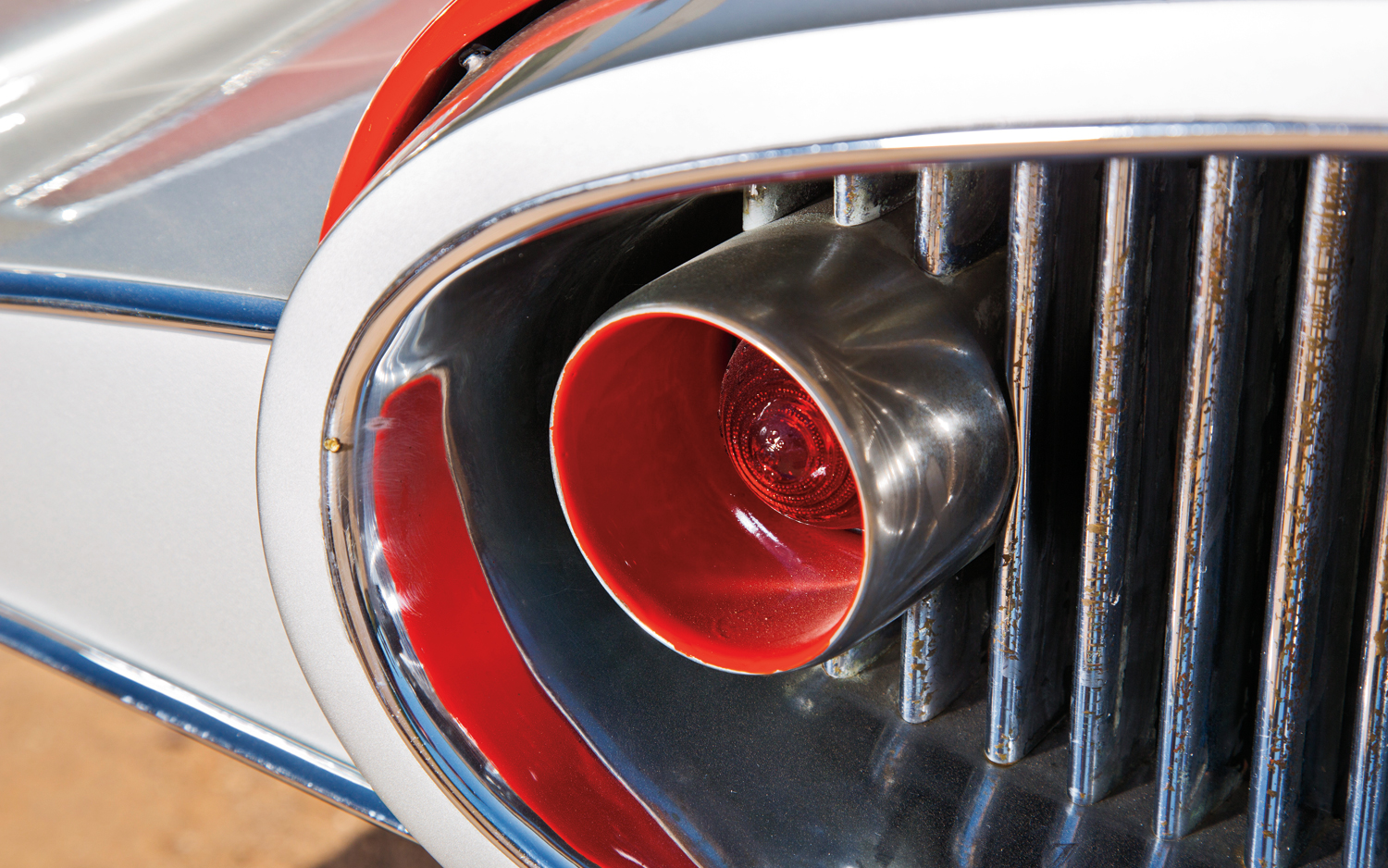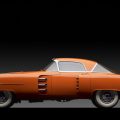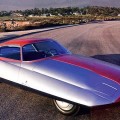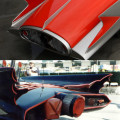Fabulously Unadorned
The Gilda’s sleek shape shows Savonuzzi’s design sensitivity and wind-tunnel testing. What makes cars like this “art” are details such as the arrow-shaped door handle and a superb use of colors.
When you take Italy’s greatest design visionaries and craftsmen, put them in a situation where they must fend for their lives for several years, then turn them loose after the siege, you get creations like the one-off Ghia Gilda.
That pressure-cooker atmosphere existed during and immediately following World War II, and a conversation with the late Sergio Pininfarina is a good place to begin discovering what was occurring. He is best remembered as the coachbuilder and industrialist extraordinaire who had a close working relationship with Enzo Ferrari and numerous other automotive luminaries. In the first half of the 1940s, he was a wide-eyed, sometimes fearful teenager, one of thousands taking refuge in the countryside outside northern Italy’s major industrial cities of Turin and Milan.
The Gilda’s sleek shape shows Savonuzzi’s design sensitivity and wind-tunnel testing. What makes cars like this “art” are details such as the arrow-shaped door handle and a superb use of colors.
Winston Goodfellow
Race Car Photographer & Author
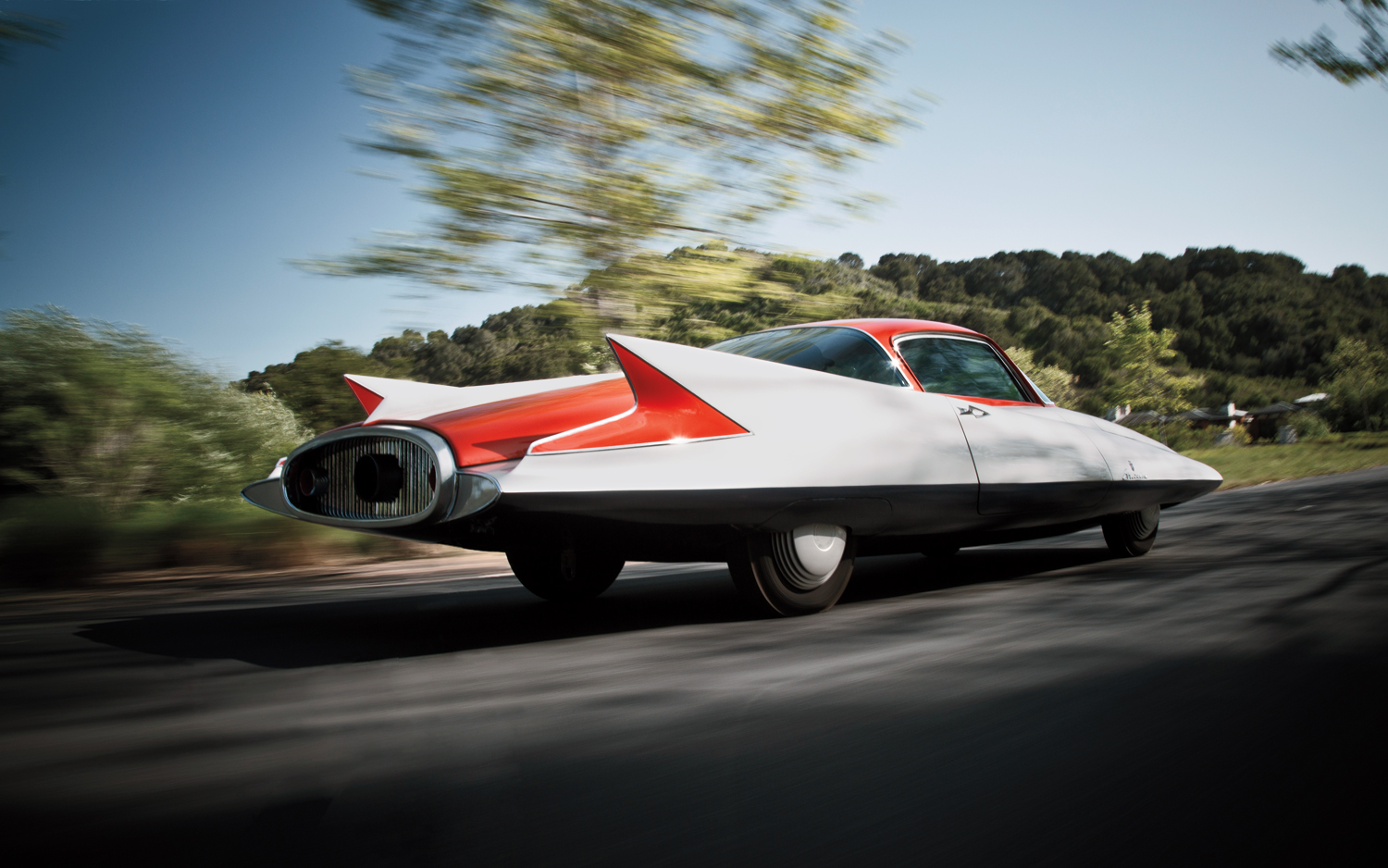
“Our factories were making the motorcycles or tanks or ambulances, something like that,” he remembers. “But the brains of the people were thinking all the time. For instance, my father could express any idea of 1939. But from [that time] to 1947, it was nearly 10 years doing nothing, just thinking. So the gap of ideas was enormous.”
Confirming such recollections is the late Nuccio Bertone. He said his father would join his family on the outskirts of Turin so he could “recharge his batteries.” Or, as famed Fiat engineer Dante Giacosa noted in his autobiography, “It was pleasant to let one’s imagination wander off to the most disparate projects. It was a practice for everyone, an excellent exercise that helped trans- form younger draftsmen into proficient technical designers.”
Three years after the war ended, the tectonic plates shifted. From the beginning of the conflict to the first Turin auto show in 1948, “it was like a giant compressed spring,” recalls Filippo Sapino, a stylist who became Carrozzeria Ghia’s last managing director. With Italy’s populace now starting to look forward, rather than back, “that spring released.”
This change, Sergio Pininfarina observes, went far beyond the world of automobiles. “It was an opening, an awakening,” he says. “For a young man like me, educated with Fascist ideas, [this] was an approach to a new life, something completely different. Not to consider the world something around Rome, but to be able to consider something more than Rome.”
One “something” repeatedly popping up on the Italians’ collective radar was America. The U.S. had escaped the devastation suffered by most everyone else during the war, leaving it the undisputed power in economic and military might. It also possessed tremendous scientific and technological skills, leading to the first documented supersonic flight over the California desert on October 16, 1947, a feat that turbocharged the Italians’ imaginations — and their interest in speed and aerodynamics.
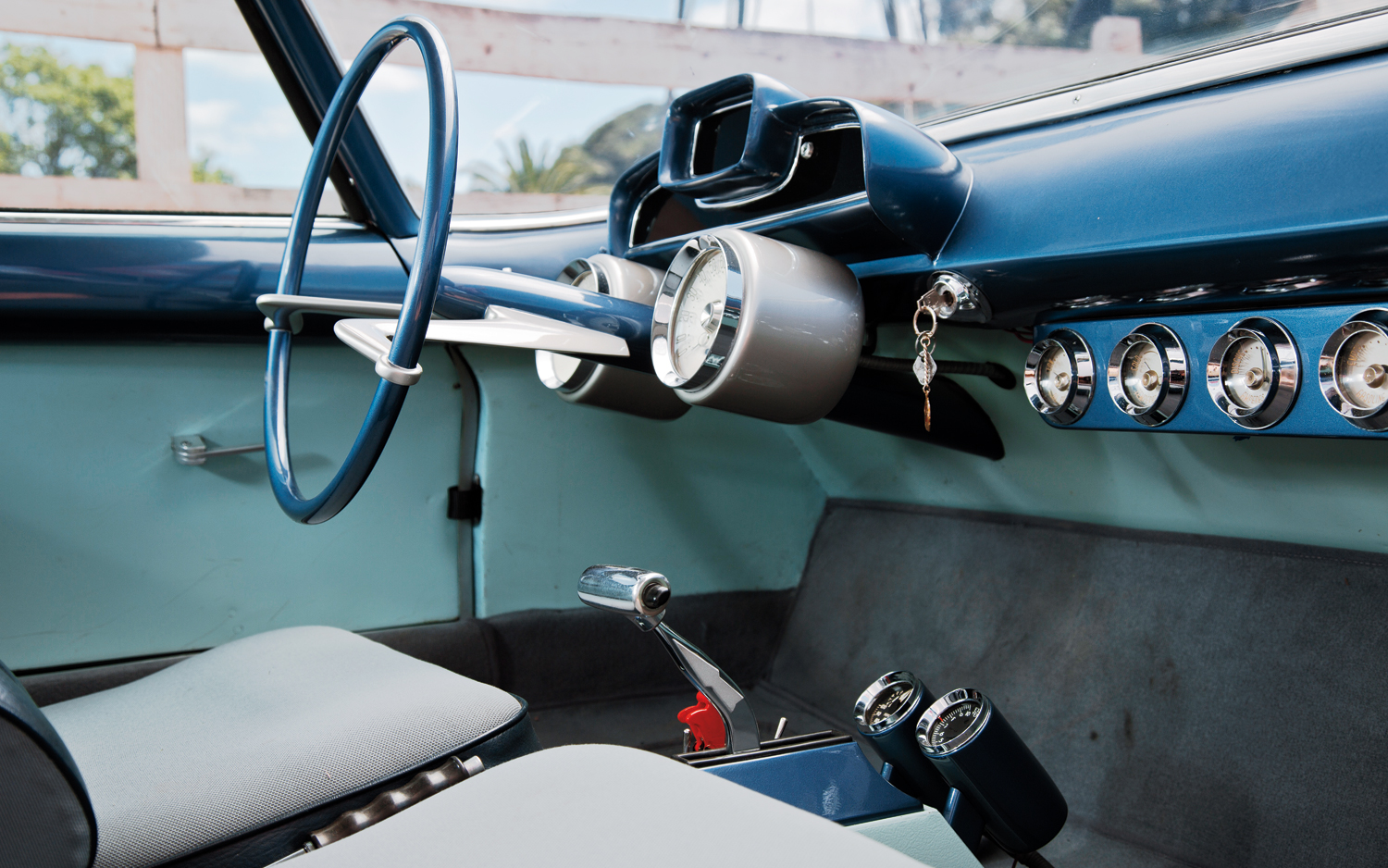

But they weren’t the first postwar Italians to experiment with airflow managed by large wings or wind-directing buttresses. That distinction belonged to engineer Giovanni Savonuzzi and his avant- garde Cisitalia CMMs of 1947. Just 36 years old when the three cars were constructed, Savonuzzi was a gifted engineer whom Giacosa described as “intelligent and creative, full of drive, and a tireless worker.” He worked in Fiat’s Aero engine testing division, and became Cisitalia’s technical director in August 1945. The CMM’s aerodynamics were so impressive that, even though the car’s 1100cc four-cylinder powerplant produced just 61 hp, it cleared 125 mph in testing and placed third overall at 1947’s Mille Miglia. The model later became known as the Savonuzzi Streamliner, proper homage to the quiet man who created it. He also had a very significant and unrecognized role in designing the seminal 202.
Savonuzzi left Cisitalia in 1948 to form his own design and engineering consultancy, then took a second job as a lecturer with the Turin Politec-nico. This assignment guaranteed access to one of the few wind tunnels in Italy. In the 1950s, a consulting client of Savonuzzi’s was Carrozzeria Ghia, which in 1953 constructed the body for an intriguing one-off he had designed for his friend Virgilio Conrero, an Alfa Romeo tuner.

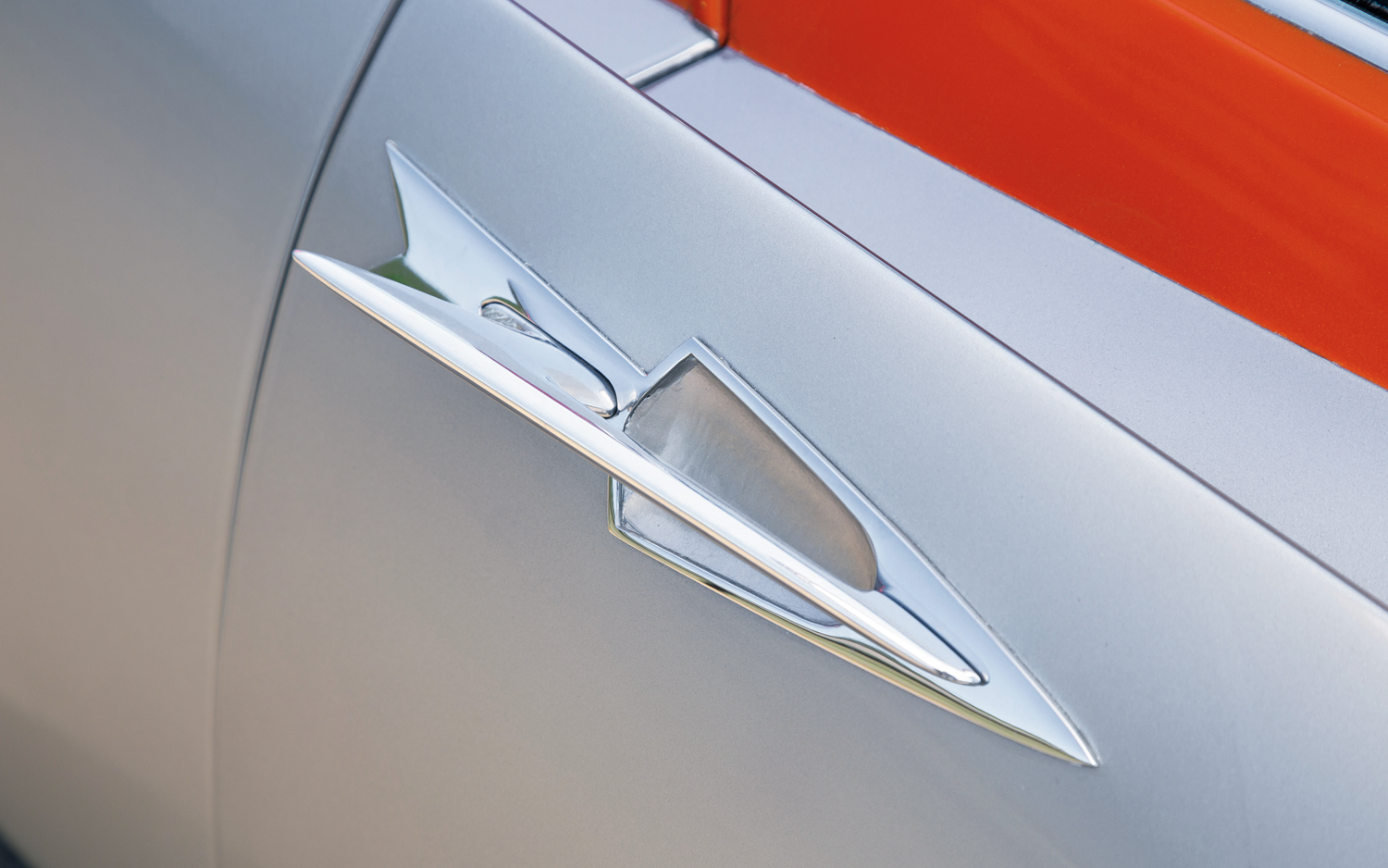
First used with spectacular effect on nine Fiat 8Vs, a one-off Aston and Jaguar followed. Ghia’s next project was the Supersonic-inspired De Soto Adventurer II, reflecting Segre’s strong alliance with Chrysler. Since 1950, De Soto’s parent company had shown a number of idea cars designed by Virgil Exner and built at Ghia. On a trip to America in 1954, “Segre noticed an influential form model my father had made in the back room at Chrysler,” says Virgil Jr., also a designer (Motor Trend’s Car of the Year trophy, created in 1966, was one of his projects).
“The model represented my father’s design philosophy, and was a showpiece in his office. Segre really liked it and asked if he could take some pictures. He took the photos back to Ghia, and that inspired Savonuzzi.”
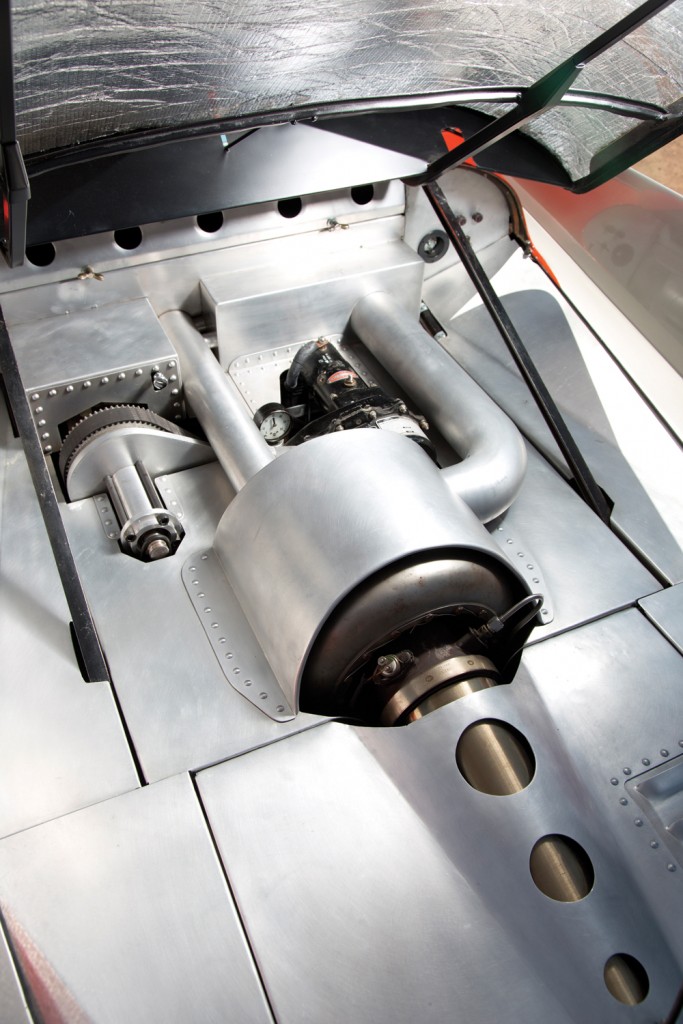
At the time, the jet age was huge — look at the “dream cars” with wings, fighter-plane tails, and transparent canopy tops such as Ford’s FX-Atmos (1954), Lincoln’s Futura (1955, constructed at Ghia), and the turbine-powered GM XP-21 Firebird (1954). While the jet theme also influenced the Italians, they were much more grounded in reality. Since most American families had owned cars for generations, their dream cars looked more like rockets or airplanes and less like cars. But cars in Italy were still rare so they needed to look like cars.
“They were an object of desire, almost an object of dreams,” Filippo Sapino says, recalling that his family purchased their first-ever car in 1956. “At the time, designing cars was much more an adventure, so you would think of what cars would evolve into — something that could take off into the sky and fly. You would think of anything, for everything seemed possible.”
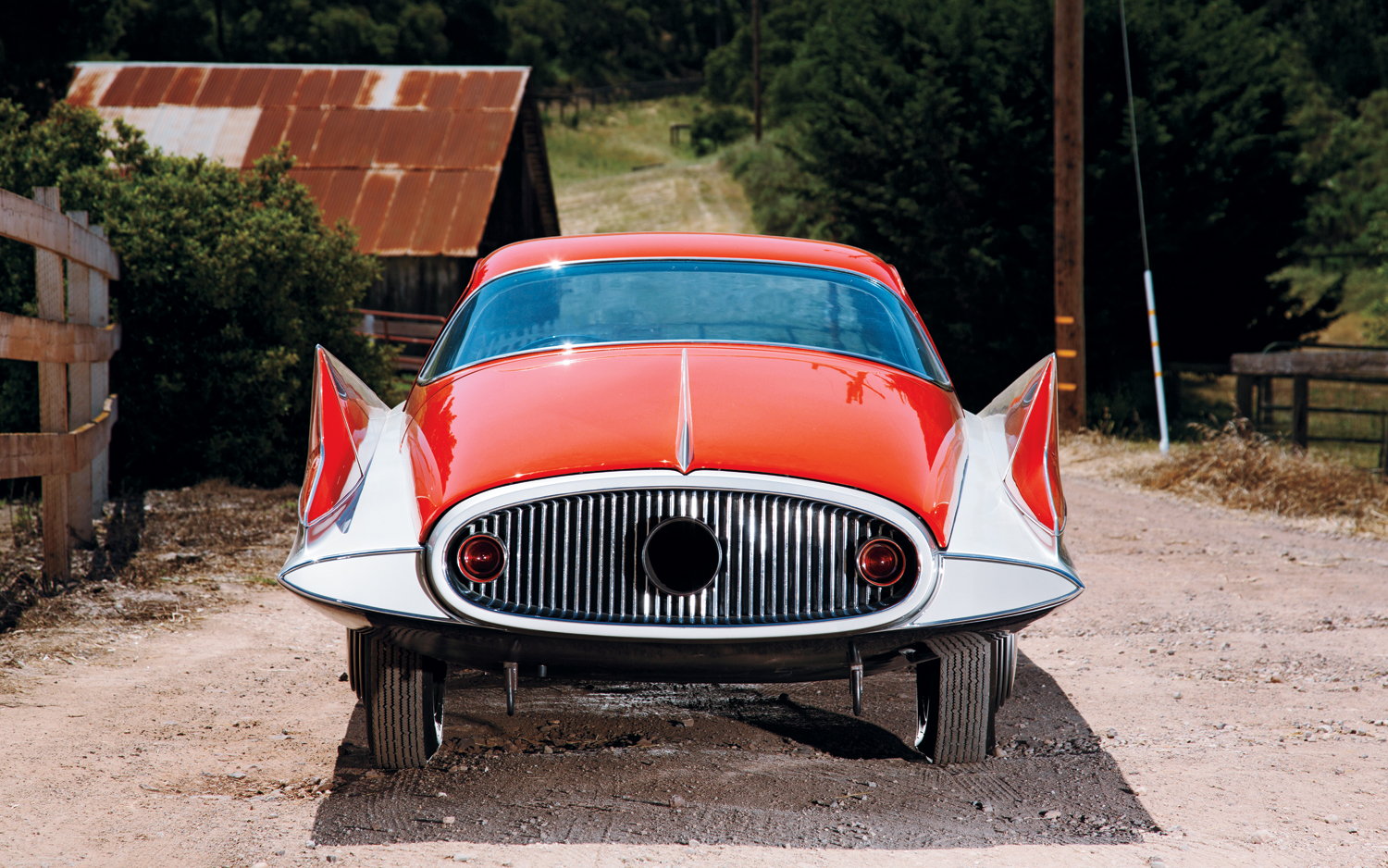
No doubt, Savonuzzi was considering flight, but in a different way — cutting through the air as efficiently as possible. Using Exner’s model as a starting point, he modernized concepts he had tried nearly a decade earlier on the Cisitalia Streamliner. Any wings used weren’t mere flights of fancy for dramatic effect, but purposeful aerodynamic aids rigorously tested on a scale model in the Turin Politechnic wind tunnel. The engineer also possessed a keen eye for forms, proportions, and delicate surface treatment, giving his designs a sensitivity, restraint, and refinement that ran counter to most dream cars’ brashness.
Once the wind-tunnel testing was done, the last component of Italy’s “released spring” came to the fore: the supporting cast of craftsmen. These highly skilled modelers and panel beaters “often came from the furniture industry, so they were used to working with wood,” noted American designer and long-time Italy resident Tom Tjaarda observes. “They easily translated what the stylists wanted into (full-size) three-dimensional shapes, so it was a synergistic relationship, with everyone working well together.” Savonuzzi then accentuated their work with a brilliant use of color — silver and orange, in this case — in a simple yet creative paint scheme that highlighted his slippery form.
The result was a wind-cheating tour de force called the Gilda, named for the famous 1946 film noir starring Hollywood’s hottest commodity, Rita Hayworth, in the title role. “When the movie came out, an ad said she was a super-sexy bomb,” Savonuzzi’s daughter, Alberta, recalls. “My father had a real sense of humor, and because of that description, the name Gilda stuck with him. He couldn’t resist calling the car that.”
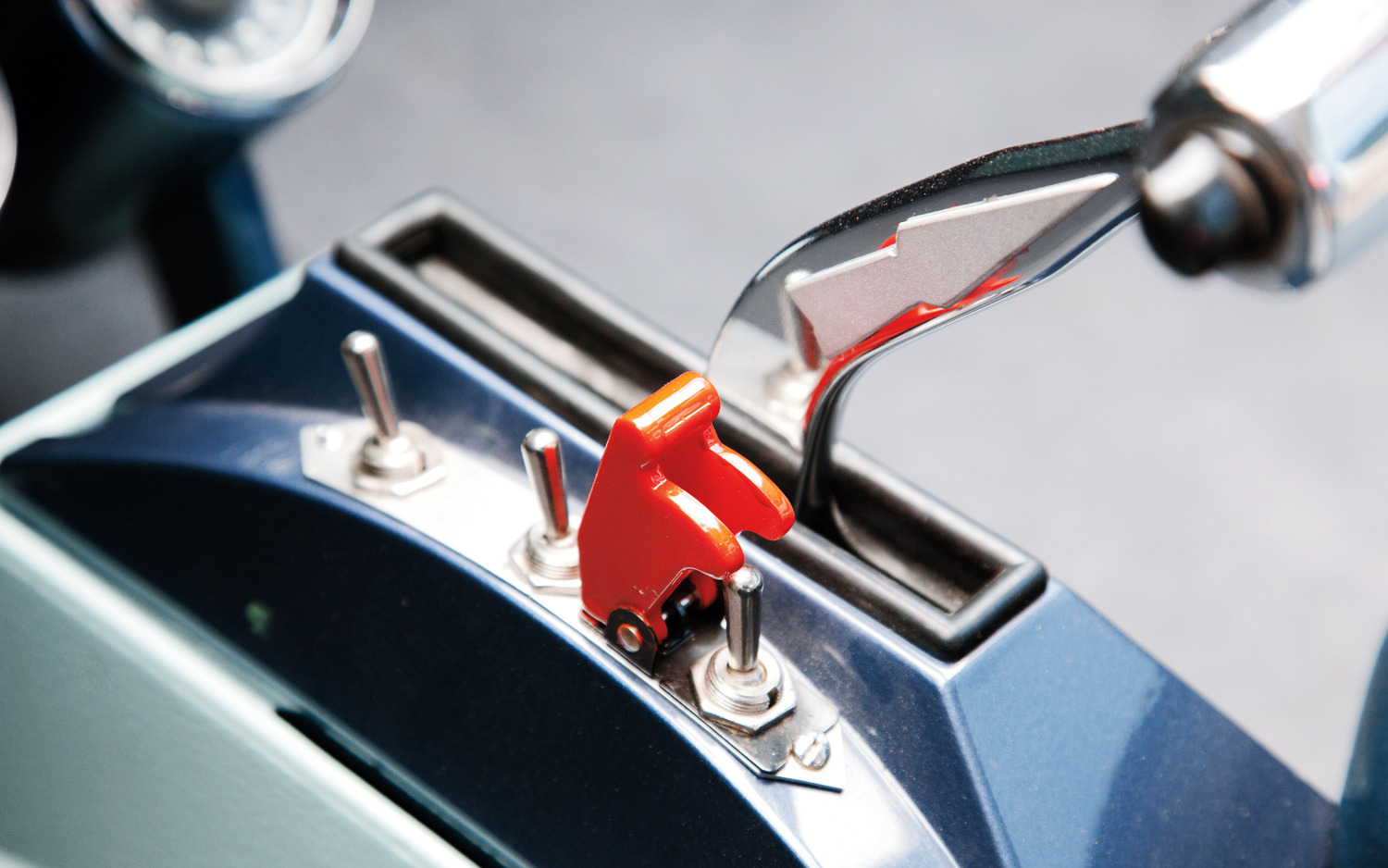
The non-running, fully trimmed model debuted at 1955’s Turin auto show, where it was the undisputed center of attention. “Italian coachbuilders no longer confine themselves to producing elegant bodywork for luxurious large cars, or for baby Fiats,” the prestigious Annual Automobile Review noted. “They now build dream cars [such as] the Gilda, exhibited by Ghia at Turin.” The shape was so harmonious, the concept so futuristic, that when it appeared on Motor Trend’s September 1955 cover with the headline “The Engine-less Ghia X, ‘X’ for Chrysler’s Gas Turbine?” no one would have doubted such an engine would power it. But, as we shall see, it took decades for that to come to fruition.
Following Turin, the Gilda made its way to America where it was shown at the Henry Ford Museum’s Sports Cars In Review Exhibit in 1956. It also appeared at the New York auto show, but the industry — Chrysler in particular — felt the shape’s influence long after. Show cars based on the Gilda theme included the Chrysler Dart and Ferrari 410 Super Gilda (1956), the Chrysler Diablo (1957), and the Guzzi-powered speed-record-setting Nibbio II, done for Count Giovanni Lurani. And, per Art Center College of Design professor Strother MacMinn, the Gilda also inspired Chrysler’s entire 1957 lineup’s Forward Look theme. After New York, the Gilda returned to the Henry Ford Museum, where it stayed until 1969. Then it went to the Reno-based museum housing casino magnate’s William F. Harrah’s collection. In 1985, the Gilda became part of the Blackhawk Collection’s group of Ghia show cars, which included the De Soto Adventurer II.

Twenty years later, renowned Mercedes restorer, Pebble Beach judge, and budding show car collector Scott Grundfor was asked if he might be interested in purchasing the Gilda. “I thought I knew what it was when it was offered,” he says, “as you don’t forget that shape. To be sure, I looked it up, and thought, ‘I have to have it.’ I bought it sight unseen.”
The Gilda was in excellent untouched condition. Period reports speculated it would be fitted with an OSCA 1500cc engine and would have a theoretical top speed of 140 mph, but close inspection revealed that never happened. So when Grundfor decided to follow through and make it a runner, he never considered an OSCA powerplant, feeling it didn’t fit the car’s heritage. Instead he focused on Motor Trend and others reporting it might have turbine power, a reasonable assumption because, after Savonuzzi left Ghia in 1956, he went to work for Chrysler in the U.S. “Engineering picked him up immediately,” Exner says, noting Savonuzzi played a significant role in properly developing Chrysler’s turbine car.
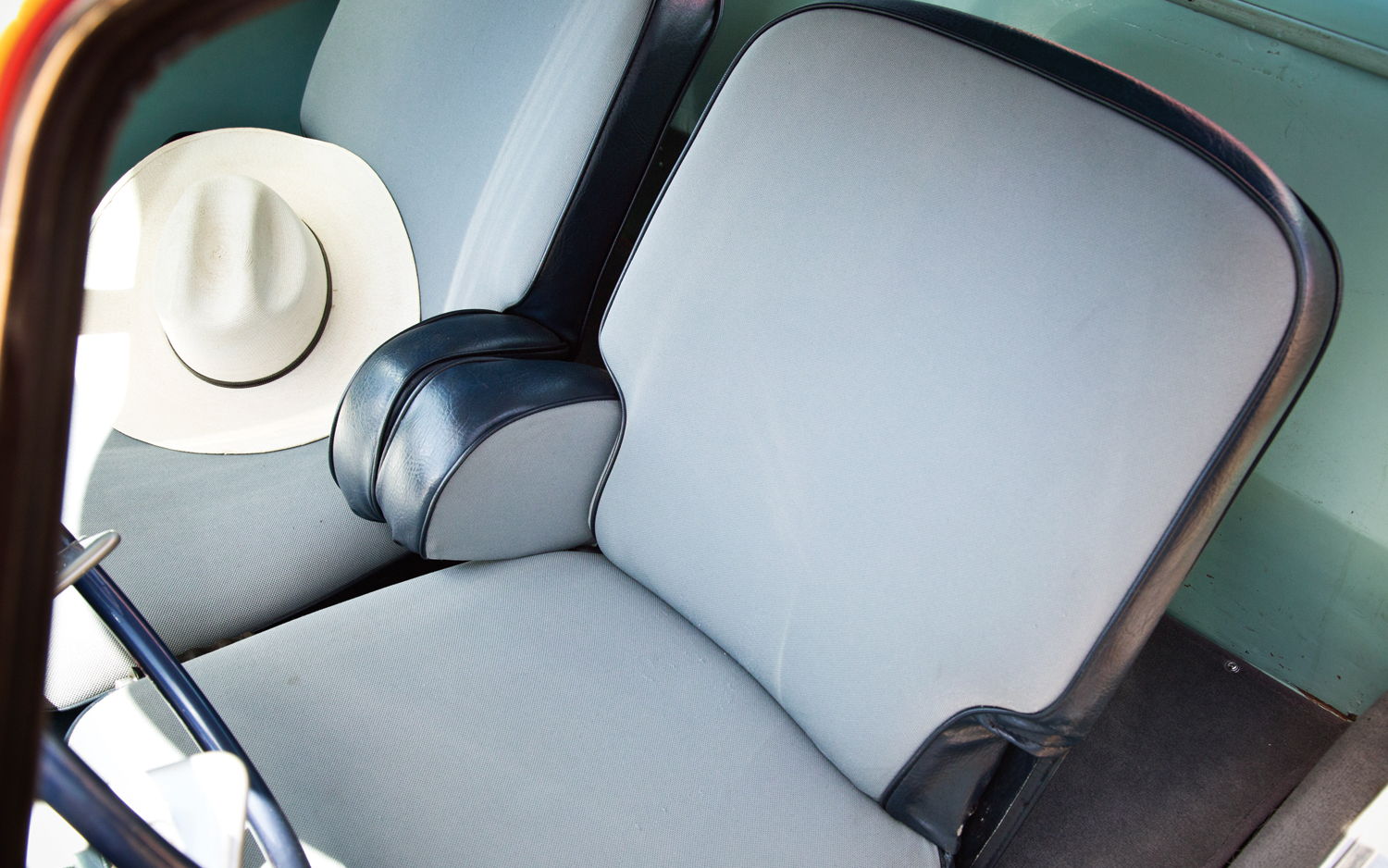
Grundfor located a period-correct AiResearch single-stage turbine, and had that engine, power transfer case, and Hydrostatic automatic gearbox installed in such a way that “they could easily be removed,” he explains. “I didn’t want to ruin the integrity of the original model.” The choice was brilliant, for that unique mechanical scream is the only appropriate sound for a shape that looks like this, coming from an era when people speculated cars would fly. When we used a quiet road in an upscale neighborhood for the motion photography, anyone who saw the Gilda stopped and pulled over, becoming impromptu spectators. More than one used a cellphone to record the episode.
That just shows this car’s star power. Its siren song remains as strong today as it did when it debuted in Turin nearly six decades ago. Former Mercedes design chief Bruno Sacco is just one of the designers who says the Gilda inspired him to enter the industry, and, in the 1980s, Art Center’s influential MacMinn named it one of the 10 most significant show cars ever.
But it may be a long-forgotten Italian worker who best sums up the Gilda’s unforgettable appeal. While cleaning the car shortly after he got it, Grundfor had a most unexpected discovery: some words etched in the belly pan under the driver’s seat floorboard, dated September 25, 1955, Ghia- Torino Italia. “A woman makes you feel like being intoxicated,” our unknown poet wrote, “but then she leaves you with a bitter taste in your mouth.”
Whether he was commenting on Hayworth’s smoldering movie character or felt jilted by the Gilda’s impending departure for America, we’ll never know.
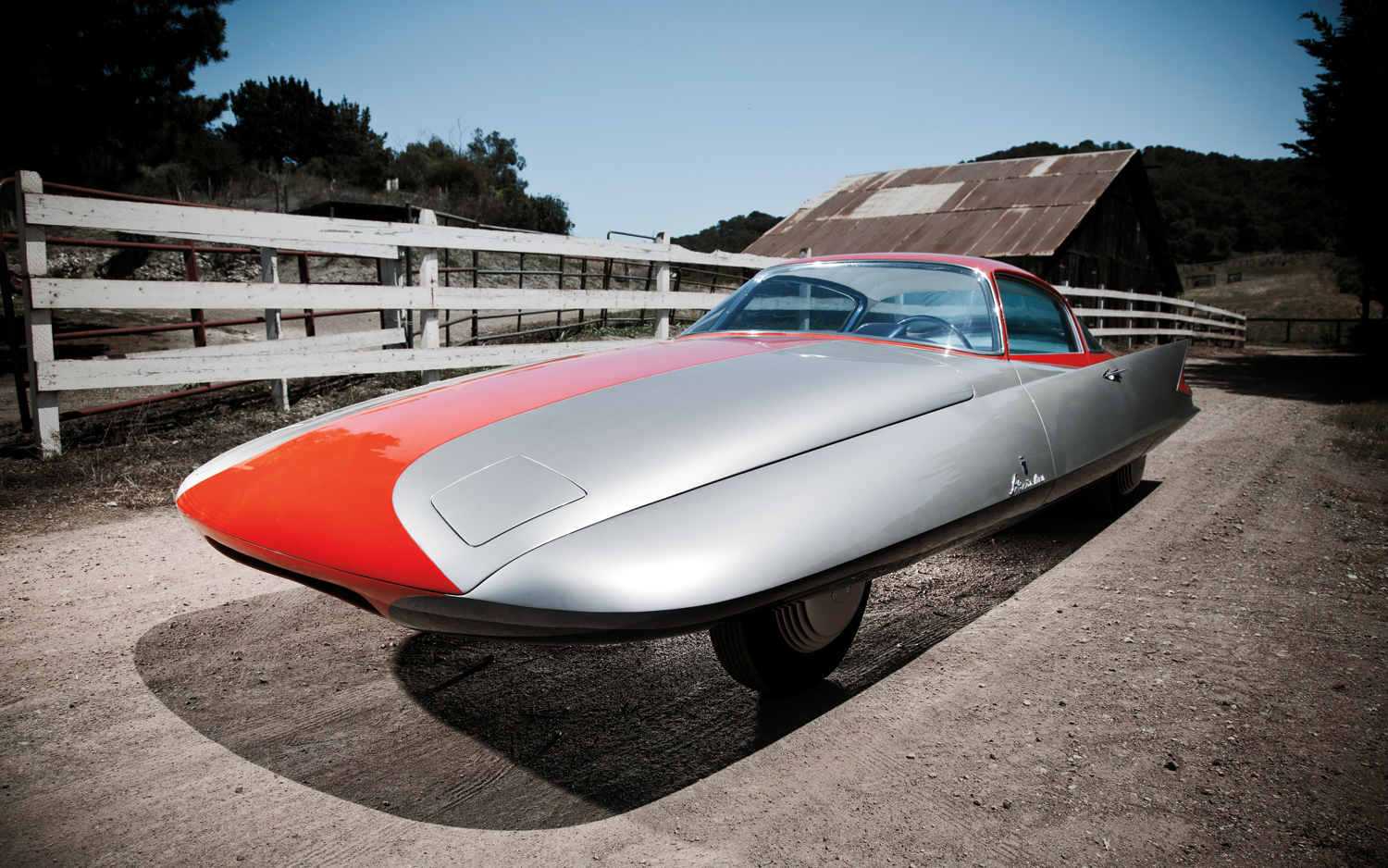
Specifications
- Engine AiResearch GTP 30-53 Single Stage gas turbine
- Power and torque 70 hp @ 64,000 rpm, torque N/A
- Drivetrain Reduction gearbox integral with turbine, coupled to hydrostatic transmission with variable valves to control power delivery and direction; RWD
- Brakes front: finned drums, rear: finned drum and hydrostatic braking on axle via gearbox
Suspension front: control arms, coil springs; rear: live axle mounted semi-rigidly to the tubular chassis - Dimensions L: 207.0 in, W: 62.0 in, H: 45.0 in
- Weight 1400 lb
- Performance Owner-estimated top speed: 150 mph
- Price when new N/A
Ask the Man Who Owns one
1955 Ghia Gilda and Scott Grundfor. Scott Grundfor is a renowned Mercedes-Benz restorer and Pebble Beach judge who purposely made the engine installation “minimally invasive and easily reversible. In my mind, the Gilda seemed unfinished. She was a beautiful three-dimensional sculpture, but lacked the animation that could be created only with sound and motion.”
Why I like it: “When I was talking with historian Michael Lamm, he referred to the car as the Mona Lisa. It’s a thrill at this point in my career to have something that is legitimate art, and then discovering and being part of its history.”
Why it’s collectible: Created by perhaps the greatest engineer/designer nobody ever heard of, in many ways this seminal one-off truly defines an era.
Restoring/maintaining: “We’ve had only two issues with the turbine, and both were really easy fixes. The engine is dead simple, quite trouble-free.”
Beware: “Just make sure you keep it out of the elements, for it is a true preservation vehicle.”
Expect to pay: If it were for sale (which it’s not), a price with two commas.

Our Take
Then: “This creation by Ghia shows that potential flights of fancy aren’t restricted to American stylists — a full-scale wooden mock-up without inhibitions, obviously to be powered by a gas-turbine.” Road & Track, August 1955
Now: Five decades later, it got that engine, bringing to life the only car to ever be named after a movie starring one of Hollywood’s most beautiful and influential screen legends.
